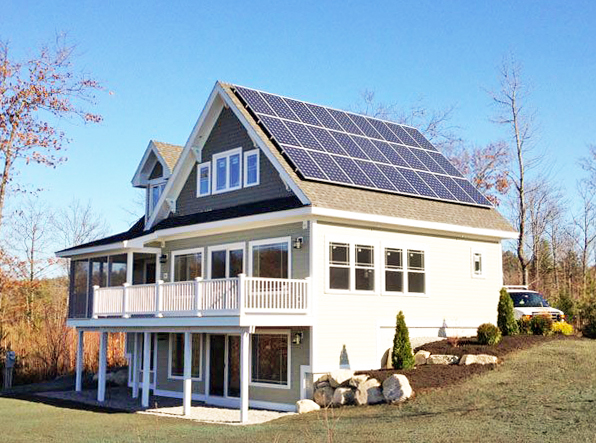
In today's world, embracing a green lifestyle and practicing sustainable living has become increasingly important. By following a set of comprehensive steps, individuals can make conscious choices to reduce their environmental impact, conserve resources, and contribute to a sustainable future.
This article aims to provide practical guidance on twelve key actions that can be taken to embrace a green lifestyle, from adopting eco-friendly practices to exploring the benefits of organic gardening.
Join us on this journey towards a more sustainable and environmentally responsible future.
Adopt Eco-Friendly Practices
To transition to a more eco-friendly lifestyle, individuals must actively incorporate sustainable practices into their daily routines.
One of the most effective ways to do this is by adopting eco-friendly practices. This involves making conscious choices to reduce our carbon footprint and minimize our impact on the environment.
One way to do this is by opting for green products that are made from sustainable materials and have minimal harm to the environment. These products can include household items, personal care products, and even clothing.
Additionally, it is essential to implement sustainable practices such as reducing energy consumption, conserving water, recycling waste, and using public transportation or carpooling whenever possible.

Embrace a Green Lifestyle
Embracing a green lifestyle not only benefits the environment but also has numerous advantages for individuals and communities. By adopting eco-friendly practices, individuals can reduce their carbon footprint, conserve resources, and create a healthier living environment.
To successfully embrace a green lifestyle, it is important to follow practical tips such as reducing energy consumption, minimizing waste, supporting sustainable products, and incorporating nature into daily routines.
Benefits of Going Green
Frequently, individuals who adopt a green lifestyle are able to enjoy a multitude of benefits that come with embracing sustainable practices. Here are four key benefits of going green and embracing an eco-conscious lifestyle:
- Environmental Impact: By choosing eco-friendly products and practices, you can significantly reduce your carbon footprint and contribute to the preservation of our planet. This includes reducing waste, conserving energy, and supporting renewable resources.
- Health Benefits: Going green often involves using natural and non-toxic products, which can have a positive impact on your health. By avoiding harmful chemicals and pollutants, you can reduce the risk of allergies, respiratory problems, and other health issues.
- Cost Savings: Embracing a green lifestyle can also lead to significant cost savings in the long run. From reducing energy consumption to minimizing waste, making sustainable choices can help lower utility bills and expenses.
- Positive Influence: By adopting a green lifestyle, you become a role model for others and inspire them to make sustainable changes as well. Your actions can create a ripple effect that contributes to a more eco-conscious society.
Practical Green Living Tips
Individuals who have already embraced a green lifestyle can continue their journey towards sustainable living by implementing practical tips for green living. Adopting eco-friendly habits not only helps to reduce our carbon footprint but also promotes a healthier and more sustainable environment.
Here are some practical green living tips that can be easily incorporated into daily life:
- Conserve energy by using energy-efficient appliances and turning off lights and electronics when not in use.
- Reduce water consumption by fixing leaks, taking shorter showers, and using water-saving fixtures.
- Minimize waste by recycling, composting, and reducing single-use items.
- Choose sustainable transportation options such as walking, biking, or carpooling.
- Support local and organic food producers to reduce the carbon footprint of food transportation.
- Use natural and eco-friendly cleaning products to avoid harmful chemicals.
Practice Conservation and Reduce Waste
Conservation and waste reduction are essential practices for promoting a green lifestyle and achieving sustainable living. By reducing water usage and minimizing consumption, individuals can make a significant impact on the environment. Here are four practical ways to practice conservation and reduce waste:
- Install water-efficient fixtures: Replace old toilets, showerheads, and faucets with water-efficient models to reduce water usage. This simple step can save gallons of water every day.
- Practice mindful consumption: Buy only what you need and avoid excessive buying. Consider the environmental impact of the products you purchase, and opt for sustainable and eco-friendly options whenever possible.
- Recycle and compost: Implement a recycling system in your home and separate recyclable materials from trash. Composting organic waste can also help reduce landfill waste and provide nutrient-rich soil for gardening.
- Reduce food waste: Plan meals, store leftovers properly, and only buy the food you will consume. Being mindful of food waste not only saves money but also reduces the environmental impact of food production and transportation.
Take Environmental Responsibility
Assuming environmental responsibility is crucial for fostering a sustainable lifestyle and ensuring the well-being of our planet. One effective way to take environmental responsibility is by choosing eco-friendly products. These products are designed to have minimal impact on the environment, from their production to their disposal. By opting for eco-friendly products, individuals can reduce their carbon footprint and contribute to the conservation of natural resources.

Another important aspect of environmental responsibility is embracing sustainable fashion. This involves making conscious choices when it comes to clothing and accessories, considering factors such as the materials used, the manufacturing processes, and the working conditions of the workers involved. Sustainable fashion promotes durability, ethical production, and responsible consumption.
Strive for Sustainability in Everyday Life
To foster a sustainable lifestyle, it is essential to integrate sustainable practices into everyday life. Here are four ways to strive for sustainability in your daily routine:
- Embrace ethical fashion: Support brands that prioritize sustainability and ethical practices. Choose clothing made from organic, recycled, or upcycled materials. Reduce waste by donating or selling clothes you no longer wear.
- Opt for sustainable transportation: Reduce your carbon footprint by using public transportation, carpooling, cycling, or walking whenever possible. Consider investing in an electric or hybrid vehicle if feasible.
- Minimize energy consumption: Switch to energy-efficient appliances, turn off lights when not in use, and unplug electronics when they're not in use. Use natural light and open windows to reduce reliance on artificial lighting and air conditioning.
- Reduce water usage: Install water-saving fixtures, fix leaks promptly, and use water wisely. Take shorter showers, collect rainwater for plants, and reuse water when possible.
Aim for Minimalism and Simplicity
To further promote sustainable living, it is important to incorporate the principles of minimalism and simplicity into our daily lives.
Minimalism is not only about decluttering and reducing material possessions, but it also extends to other aspects of our lifestyle, such as fashion and architecture.
Embracing minimalist fashion means opting for timeless, versatile pieces that are ethically produced and have a lower environmental impact.
Sustainable architecture focuses on designing buildings that are energy-efficient, use eco-friendly materials, and integrate renewable energy sources.
By adopting a minimalist approach to fashion and embracing sustainable architecture, we can reduce our consumption, waste, and carbon footprint.

This shift towards minimalism and simplicity allows us to live a more intentional and sustainable life, benefiting both ourselves and the environment.
Enhance Energy Efficiency at Home
Enhancing energy efficiency at home is an important step towards embracing a green lifestyle. One way to achieve this is by insulating your home properly, which can improve insulation and reduce the need for excess heating or cooling.
Upgrading to LED lighting and using smart thermostats are also effective measures that can help save energy and reduce electricity consumption.
Insulate for Better Insulation
One effective way to enhance energy efficiency at home is by properly insulating it. Insulation helps to reduce heat transfer, keeping the house warm in winter and cool in summer, thereby improving energy efficiency and reducing the carbon footprint.
Here are four practical steps to insulate your home effectively:
- Attic insulation: Adding insulation to the attic can prevent heat loss through the roof, reducing the need for excessive heating or cooling.
- Wall insulation: Insulating the walls can minimize heat transfer, maintaining a comfortable temperature inside the house and reducing energy consumption.
- Window insulation: Installing energy-efficient windows or using window films can prevent drafts and heat loss, improving insulation.
- Door insulation: Weatherstripping or adding door sweeps can seal gaps and cracks, preventing air leakage and enhancing insulation.
Upgrade to LED Lighting
How can we further enhance energy efficiency at home after insulating for better insulation?
One effective way is to upgrade to LED lighting. LED stands for Light Emitting Diode, and these bulbs are known for their energy efficiency and long lifespan.

By replacing traditional incandescent or compact fluorescent bulbs with LED bulbs, you can significantly reduce your energy consumption and save money on your electricity bills.
LED bulbs also emit less heat, which means they are safer to use and reduce the need for cooling in your home.
Additionally, LED bulbs are available in a variety of styles and fixtures, making it easy to find options that suit your personal taste and needs.
Make the switch to LED lighting and start saving energy today.
Use Smart Thermostats
A practical solution to enhance energy efficiency at home is by utilizing smart thermostats. These devices are an essential part of smart home automation and are designed to optimize energy usage while providing comfort and convenience.
Here are four ways smart thermostats can enhance energy efficiency:
- Temperature programming: Smart thermostats allow you to create personalized schedules for heating and cooling, ensuring that energy is only used when needed. This helps to reduce wasteful energy consumption.
- Remote control: With smart thermostats, you can control your home's temperature from anywhere using your smartphone. This means you can adjust the temperature when you're away, avoiding unnecessary energy usage.
- Learning capabilities: Some smart thermostats have the ability to learn your schedule and preferences over time. They can automatically adjust temperature settings to optimize energy usage based on your habits, further enhancing efficiency.
- Energy monitoring: Smart thermostats provide real-time energy usage data, allowing you to track and analyze your energy consumption. This information helps you identify areas where you can make further energy-saving improvements.
Utilize Renewable Resources Wisely
Utilize renewable resources optimally to foster a sustainable green lifestyle.

Renewable energy sources, such as solar, wind, and hydro power, offer a clean and abundant alternative to fossil fuels. By harnessing these resources, we can reduce our carbon footprint and contribute to a healthier planet.
Sustainable resource management is key to ensuring the longevity of these renewable sources. This involves using them efficiently, minimizing waste, and implementing recycling programs.
To make the most of renewable resources, consider installing solar panels on your roof, using wind turbines, or utilizing geothermal energy. Additionally, support companies and organizations that prioritize renewable energy and sustainable practices.
Implement Composting for Organic Waste
Implementing composting for organic waste is a practical and effective way to minimize waste and promote sustainable living. By following composting techniques and adopting organic waste management practices, individuals can contribute to a greener environment.
Here are four steps to implement composting for organic waste:
- Start with a compost bin: Choose a suitable container for composting, such as a compost bin or a compost pile in your backyard.
- Collect organic waste: Gather kitchen scraps, yard waste, and other organic materials like fruit and vegetable peels, coffee grounds, and grass clippings.
- Create the right mix: Combine 'green' materials like fresh grass clippings and vegetable scraps with 'brown' materials like dry leaves and newspaper to achieve a balanced carbon-to-nitrogen ratio.
- Maintain the compost: Regularly turn and aerate the compost to speed up the decomposition process and prevent odors. Ensure the compost remains moist but not wet.
Implementing these composting techniques will not only divert organic waste from landfills but also yield nutrient-rich compost that can be used to enrich soil and promote healthy plant growth.
Start composting today and make a positive impact on the environment.

Explore the Benefits of Organic Gardening
Organic gardening offers a multitude of benefits, making it a worthwhile endeavor for those seeking a sustainable lifestyle.
By growing your own organic fruits and vegetables, you can enjoy healthier food choices that are free from harmful pesticides and chemicals.
Additionally, organic gardening helps reduce the environmental impact by conserving water, promoting biodiversity, and preserving soil health.
Healthier Food Choices
One way to make healthier food choices and contribute to sustainable living is through the practice of cultivating a garden using organic methods. Organic farming involves using natural fertilizers and pesticides, avoiding genetically modified organisms (GMOs), and promoting biodiversity. By growing your own food organically, you can enjoy the following benefits:
- Nutrient-rich produce: Organic gardening ensures that your fruits and vegetables are packed with essential nutrients, as they are grown in nutrient-rich soil without the use of synthetic chemicals.
- Reduced exposure to harmful chemicals: By avoiding pesticides and herbicides, you can minimize your exposure to harmful chemicals that can have detrimental effects on your health.
- Better taste and quality: Organically grown produce often has a superior taste and quality compared to conventionally grown counterparts.
- Environmental sustainability: Organic gardening promotes environmental sustainability by reducing soil erosion, conserving water, and preserving biodiversity.
Environmental Impact Reduction
To reduce our environmental impact, consider the numerous benefits of incorporating organic gardening practices into our daily lives. Organic gardening is a method of growing plants without the use of synthetic pesticides, fertilizers, or genetically modified organisms. By embracing organic gardening, we can reduce our reliance on harmful chemicals and contribute to a healthier environment.
One of the key benefits of organic gardening is promoting environmental awareness. By using natural methods to control pests and enrich the soil, we minimize the negative impact on ecosystems and wildlife. Additionally, organic gardening helps to conserve water by using techniques such as mulching and proper irrigation practices.
Furthermore, organic gardening encourages the use of eco-friendly products. Instead of relying on chemical-based fertilizers, organic gardeners utilize compost and natural sources of nutrients to nourish their plants. This not only reduces pollution but also enhances the soil's fertility and promotes sustainable agriculture.

Make Conscious Choices for Ethical Consumption
Consumers should prioritize the incorporation of ethical consumption practices into their daily lives to contribute to a more sustainable and eco-friendly future.
Here are four practical steps to make conscious choices for ethical consumption:
- Embrace ethical fashion: Opt for clothing made from sustainable materials, such as organic cotton or recycled fabrics. Support brands that prioritize fair trade practices, transparency, and ethical manufacturing processes.
- Choose sustainable transportation: Reduce your carbon footprint by opting for eco-friendly modes of transportation, such as walking, cycling, or using public transport. If you need a car, consider investing in an electric or hybrid vehicle.
- Support local and sustainable food: Purchase locally sourced, organic, and seasonal produce. Reduce food waste by planning meals and composting leftovers. Choose products with minimal packaging and opt for reusable bags and containers.
- Make informed purchasing decisions: Research the environmental and social impact of the products you buy. Support companies that adhere to ethical and sustainable practices and avoid those with a history of exploitation or harmful practices.
Commit to a Sustainable Future
Building upon the importance of ethical consumption, it is crucial for individuals to commit to a sustainable future by making conscious choices in their daily lives. One way to do this is by embracing ethical fashion. By opting for sustainable and fair-trade clothing, individuals can support brands that prioritize environmental and social responsibility. This includes choosing clothing made from organic or recycled materials, as well as supporting brands that provide fair wages and safe working conditions for their employees.
Another important aspect of committing to a sustainable future is through sustainable transportation. This can be achieved by reducing reliance on fossil fuel-powered vehicles and instead opting for greener alternatives such as walking, cycling, or using public transportation. Additionally, individuals can consider carpooling or using electric vehicles to minimize their carbon footprint.
Frequently Asked Questions
What Are Some Simple Ways to Reduce Water Consumption at Home?
Reducing water consumption at home is important for water conservation. Some simple water saving tips include fixing leaky faucets, using water-efficient appliances, taking shorter showers, and collecting rainwater for gardening.
How Can I Incorporate Renewable Energy Sources Into My Daily Life?
Incorporating renewable energy sources like solar power and wind turbines into daily life is a practical way to embrace a green lifestyle. These sustainable alternatives provide clean energy and contribute to a more environmentally friendly future.
Is It Possible to Have a Sustainable Lifestyle Without Drastically Changing My Current Habits?
Yes, it is possible to have a sustainable lifestyle without drastically changing your current habits. By making small changes such as reducing energy consumption, recycling, and supporting eco-friendly products, you can gradually transition towards a more sustainable way of living.

What Are Some Alternatives to Single-Use Plastic Products?
Replacements for single-use plastic products include reusable alternatives such as stainless steel water bottles, cloth shopping bags, and bamboo utensils. These alternatives offer benefits like reducing waste, conserving resources, and minimizing environmental impact.
How Can I Encourage My Community to Embrace a Green Lifestyle and Sustainability?
To encourage community engagement and promote a green lifestyle, it is essential to implement educational campaigns that raise awareness about sustainability and its benefits. By educating individuals and providing practical solutions, communities can embrace a more sustainable way of living.
 Family Craft ProjectsHome ImprovementCooking and BakingReuse and RecycleDIY GiftsEco-Friendly ProjectsDIY Home SolutionsSeasonal ActivitiesFun and GamesLearn TogetherPrivacy PolicyTerms And Conditions
Family Craft ProjectsHome ImprovementCooking and BakingReuse and RecycleDIY GiftsEco-Friendly ProjectsDIY Home SolutionsSeasonal ActivitiesFun and GamesLearn TogetherPrivacy PolicyTerms And Conditions

 Family Craft ProjectsHome ImprovementCooking and BakingReuse and RecycleDIY GiftsEco-Friendly ProjectsDIY Home SolutionsSeasonal ActivitiesFun and GamesLearn TogetherPrivacy PolicyTerms And Conditions
Family Craft ProjectsHome ImprovementCooking and BakingReuse and RecycleDIY GiftsEco-Friendly ProjectsDIY Home SolutionsSeasonal ActivitiesFun and GamesLearn TogetherPrivacy PolicyTerms And Conditions
